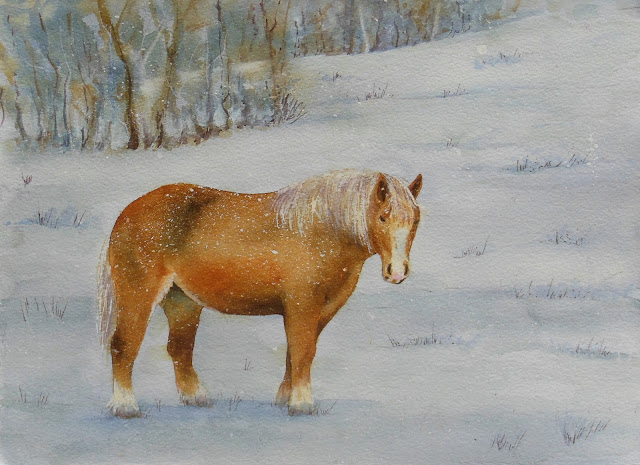 |
| I worked on this a little. I worked on some of the fish mostly. |
 |
| I worked on this quite a bit. I have added leaves, values, and details. It could be done, but I may add dark values in places. |
 |
| I worked on this a little. I worked on some of the fish mostly. |
 |
| I worked on this quite a bit. I have added leaves, values, and details. It could be done, but I may add dark values in places. |
 |
| I added a flower and worked on the wings. Needs more work to make it pop, but it's getting close. |
 |
| I worked on the values and details, still need to work on the top leaves. |
 |
| This one is pretty far. Need to work on the background textures is close, but needs a bit more. |
 |
| I worked on this a little more. I added values and details. I even highlighted and shadowed some bubbles so they would have more form. This one is done and heading to Mom for Christmas. |
 |
| I worked more on the fish of course adding value and color as well as details. I also broke up the large masking shapes as needed using them to make water shapes. |
 |
| Acrylic textured background, liquitex clear gesso, and a transferred drawing. I plan to shade the flower with colored pencil. |
 |
| This is alcohol ink on translucent yupo. |
 |
| I have worked on adding more white and also added some green to start the leaves. The white is almost done. |
 |
| I have worked on the flower and leaves adding some shadows and a few more highlights and details. |
 |
| Still working with the white. Have used a little black to push a few things back. Need to keep working with the white and then will use glazes of color and some darks as needed as well as details. |
 |
| I glazed yellow in the background and added more white to the mushrooms. This needs quite a lot more work, barely started. |
 |
| I used a scrubber to add white to the land in the back, behind the trees. |
 |
| Plexiglas, Daniel Smith transparent watercolor ground and watercolor on one side, Liquitex clear gesso and colored pencil on the other side. I worked more on the skin. Need to begin the hair... |
 |
| Yupo (translucent), blue alcohol ink, Liquitex clear gesso, colored pencil. This is at the start, need to work on the values and the details. |
 |
| Yupo (translucent), alcohol inks, Liquitex clear gesso. |
 |
| Yupo (translucent), alcohol inks |
 |
| I started with white on the mushroom. I mixed a dark green for the background (black, yellow, and a little red). I will continue with this for the values and begin adding details as well. |
 |
| I added more rubber cement, let it dry, and painted red. |
 |
| I have used rubber cement to make grass texture. Masking fluid could be used as well. This needs more layers (which will make it easier to see as well). |
 |
| I started with white, painting the values (various values of white from opaque to transparent). I started glazing some color. |
 |
| This is a sample from another class. Acrylic, bubble wrap texture, painted the petals with white first and then the yellow and red. Left the background showing in the middle. This is not done. |
 |
| Rubber cement texture done in another class. This one has two layers. |
 |
| Wax paper texture. Acrylic on cheap watercolor paper. I wet the paper, dropped in the color. crumpled the wax paper, laid it one top, and weighed it down. Then let it dry. |
 |
| Wet in wet. Acrylic on cheap watercolor paper. I wet the paper and dropped in color. This one needs another layer or two of color. |
 |
| Wet in wet. Acrylic on cheap watercolor paper. I wet the paper and used leftover paint to create a background. This is a good use of your leftover paint after a painting session. |